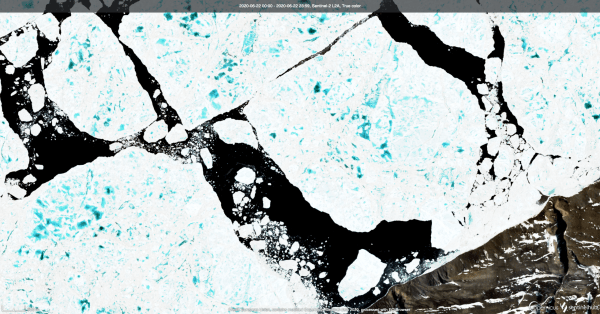Eyes on the Arctic
With Arctic sea ice fast approaching its minimum extent for the year, all eyes are once again on the region. The ice cover of the Arctic Ocean naturally waxes and wanes throughout the year, and by mid-September, it will reach its lowest areal extent. At the end of August 2020, the ice covered about 4.4 million km2 of the Arctic Ocean, down ~0.25 million km2 from this time last year. That’s a loss of ice area equivalent in size to about twice the Commonwealth of Virginia! The lowest ice extent in the 40-year satellite record was set in 2012, and this year we’re unlikely to see that record broken, due to the persistence of ice in the eastern Beaufort Sea this month. Nevertheless, the 2020 ice cover is still well below the climatological average.
Geographical Sciences Associate Professor, Dr. Sinead L. Farrell, is using data from NASA’s ICESat-2 satellite to monitor Arctic sea ice. Her findings were reported in a recent news article in Science magazine. Dr. Farrell and her team have discovered that ICESat-2 is capable of measuring the smallest features on the ice cover, including narrow pressure ridges and shallow melt ponds. Their analysis also shows that the older ice gets, the rougher it becomes. Meanwhile the German icebreaking research vessel, Polarstern, is frozen into the ice at the North Pole. On board, scientists from around the world are making measurements of the ice, ocean and atmosphere around the clock, as part of the “Multidisciplinary drifting Observatory for the Study of Arctic Climate” (MOSAiC) expedition. Together the field measurements and the satellite data from ICESat-2 will give us a better understanding of the health of the ice and its vulnerability to further decline. This information is needed to predict if the Arctic might become completely ice-free in summer sometime in the future.
Image: Satellite image of azure blue melt ponds on sea ice floes in the Arctic Ocean, off the coast of northern Greenland in June 2020.
Image Credit: European Union, contains modified Copernicus Sentinel data 2020, processed with EO Browser
Published on Tue, 09/08/2020 - 06:53


